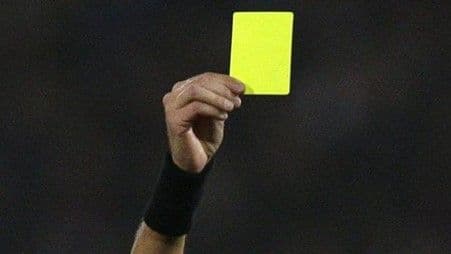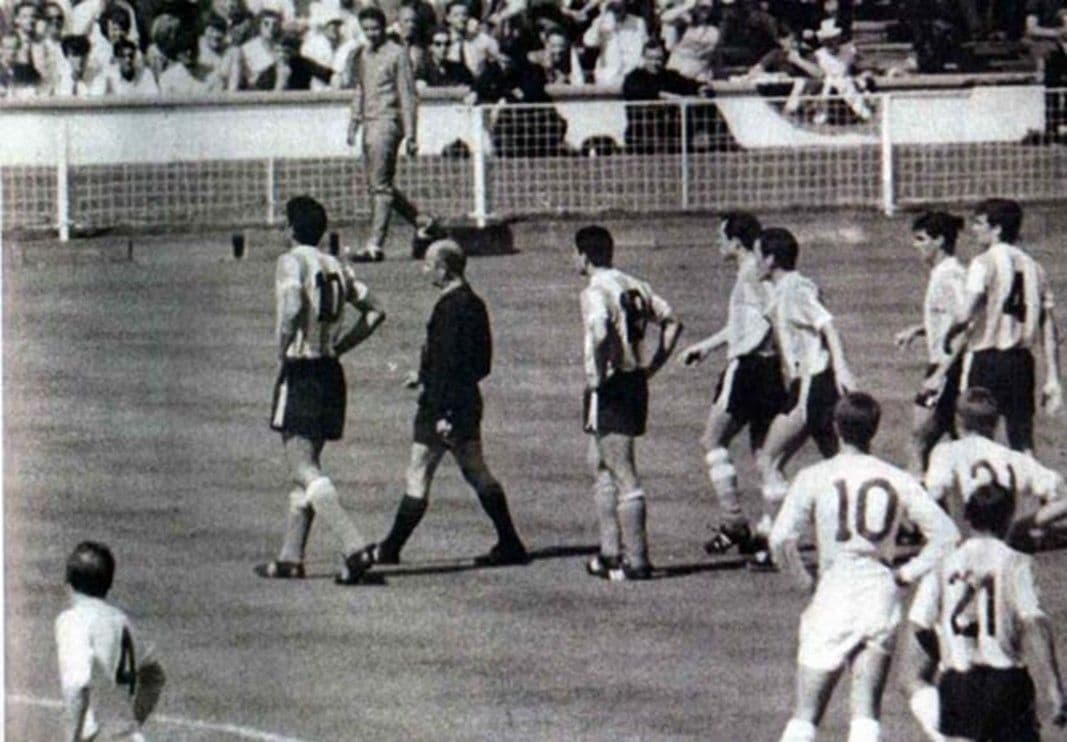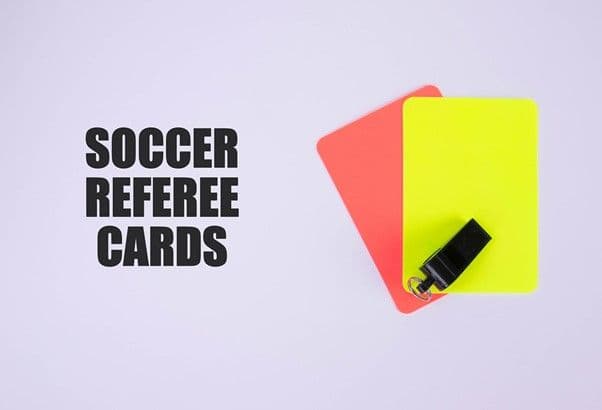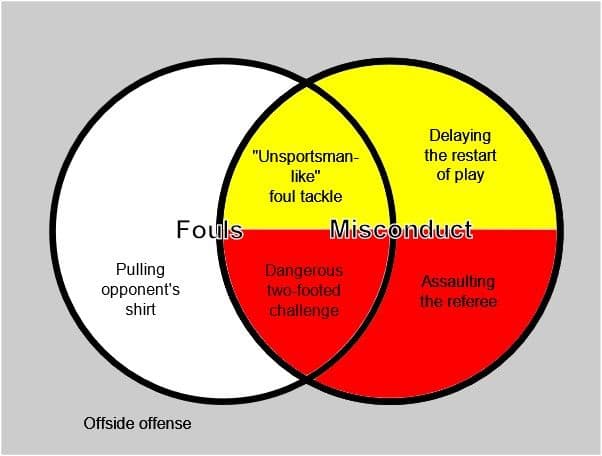Football
What is yellow card in football: Rules, history and its use
The yellow card goes way back. But it was not always the same as it is now in football.

Image Credits: REFSIX
The yellow card in football goes back a long time, and its rules, history, and use have not varied too much since the card’s inception.
SportsBoom decided to investigate the history of the yellow card and its use throughout history in football.
Yellow cards were rarely shown during most of the early 20th century. In fact, from the 1960s to the 1980s, yellow cards came only with serious misconduct.
Yellow cards in bygone times would often be a straight red card in modern football.
The 1960s and 1970s were the decades where football was fierce, even a little “dirty” as teams kicked each other off the park. Yellow cards were rarely issued.
It is only since the late 1990s that yellow cards get handed out for a wide-ranging array of offences.
Simulation (cheating) or talking back to the referee; players taking off their shirt after scoring, kicking the ball away after the whistle has been blown are all yellow cards.

Image Credit: Ian Burt
Players deliberately handling the ball, time-wasting, jumping into the crowd after scoring, and late tackles are other offences that will bring about a yellow card.
This has a lot to do with the way football has evolved, the advent of simulation, unsportsmanlike conduct, and the globalisation of the sport.
South American players applying their trade in Europe have changed the way games are officiated.
Their skills and speed are unrivalled around the world, but they also brought their “street football” and a different “moral code” to competing.
Think Maradona’s “Hand of God” against England in 1986 or Luis Suarez’s deliberate handball on the goal line against Ghana in 2010 in South Africa.
Just mention Neymar’s name in conversation, and things will get heated. His skills were silky and great to watch, but his antics of rolling around on the floor were unsporting.
The history of the yellow card in football began with Ken Aston
The yellow card was first used during the 1970 World Cup in Mexico.
However, the practice of cautioning players with cards has been part of the laws of association football since 1881.
English referee Ken Aston first came up with the idea of the coloured cards after much confusion during the 1966 World Cup clash between Argentina and England.
There was confusion as to whether Jack Charlton had been booked by the German referee, Rudolf Kreitlein, during the game.

Image Credits: El Grafico magazine/Public Domain
Aston was at the helm of the Chile vs. Italy match at the 1962 FIFA World Cup. He sent off Italy's Giorgio Ferrini, but they struggled to communicate because of the language barrier.
The player refused to leave the field of play, and the local police had to intervene.
There was more uncertainty because of language barriers as more international tournaments were staged across the world.
Aston noticed a lot of confusion regarding foul calls, cautions, and send-offs. The referee's decision wasn't always clear to the players, coaches, and fans.
Aston realised that a colour-coding scheme based on the same amber/yellow (“stop if safe”) - red (stop) principle was used on traffic lights.
He determined this would traverse language barriers and clarify to players and spectators that they had been cautioned or sent off.
His idea of colour-coding was first implemented at the subsequent 1970 World Cup.

Image Credits: Steindy
When is a Yellow Card Handed Out?
Yellow cards are used by referees to caution players for any number of offences and to keep the game being played in a sportsman-like fashion.
Fouls and misconduct are addressed in Law 12 of the Laws of the Game.
To ensure football is played in the right spirit, the onfield referee shows a yellow card as a caution to a player, substitute on the bench, substituted player or team official found guilty of committing fouls.
These are the laws of the game laid down by the International Football Association Board (IFAB).
How do referees use yellow cards in football?

Image Credits: Marco Verch
The referee can decide to caution a player with a yellow card for various infractions before, during, or after a football match.
These include the following offences:
Unsporting Behaviour
From reckless fouls to deliberate fouls that stop a promising attack. Diving and feigning injury. Excessive goal celebrations (taking off shirt, jumping into the crowd) are included.
Dissent by Word or Action
This depends on what the referee deems unnecessary or excessive.
The usual examples are swearing, using insulting language, shouting at the officials, crowd or opposition players.
The same goes for crowding around the referee, clapping sarcastically at a decision, and throwing the ball away.

Image Credits: Екатерина Лаут
Persistently Infringing on the Laws of the Game
Committing a so-called “small” foul does not necessarily mean a yellow card.
However, the referee can hand a yellow card to players who continuously commit these often “niggly” fouls throughout the match.
Delaying the Restart of Play
The stoppage or delay of play due to a foul call, an injury, or a ball going out of bounds is deemed unsporting.
Referees hand out yellow cards to players who deliberately delay the restart of play for time-wasting.
These include players wasting excessive time during free kicks, goal-kicks, returning from injury treatment, or failing to leave the field when injured.

Image Credits: Luke Surl
Fails to Respect the Required Distance
During free kicks, corners, or throw-ins, the players must stand at least ten yards away.
If the players do not retreat despite warnings, they will receive a yellow card.
Entering or Leaving the Pitch Without the Referee's Permission
This refers to a substitute entering the field of play before the referee allows the change.
This also includes players re-entering without permission (those who went off for injury reasons during the match).
A player leaving the field without the referee's consent is also handed a yellow card.
VAR Rules
In leagues with VAR (Video Assistant Referees), players can also receive a yellow card for entering the referee's review area.
The same goes for excessively asking referees to review a decision with VAR.
FAQs
Ken Aston came up with the yellow/red card system in 1966.
The yellow card was first used during the 1970 World Cup in Mexico.
For more guides, exclusive interviews, and news in the football world, make sure to stay connected with Sportsboom.com.

Kaylan Geekie is a sports fanatic. He attended Durban High School before moving to Scotland, where he lived for 15 years. During his time in the United Kingdom, Kaylan graduated with a first-class BA Honours Degree in Sports Journalism at the University of the West of Scotland. Kaylan worked for nine years as the Match-Day Editor of SuperXV.com, reporting on Super Rugby, The Rugby Championship, the 2015 Men's Rugby World Cup and the 2017 British & Irish Lions series for the website.